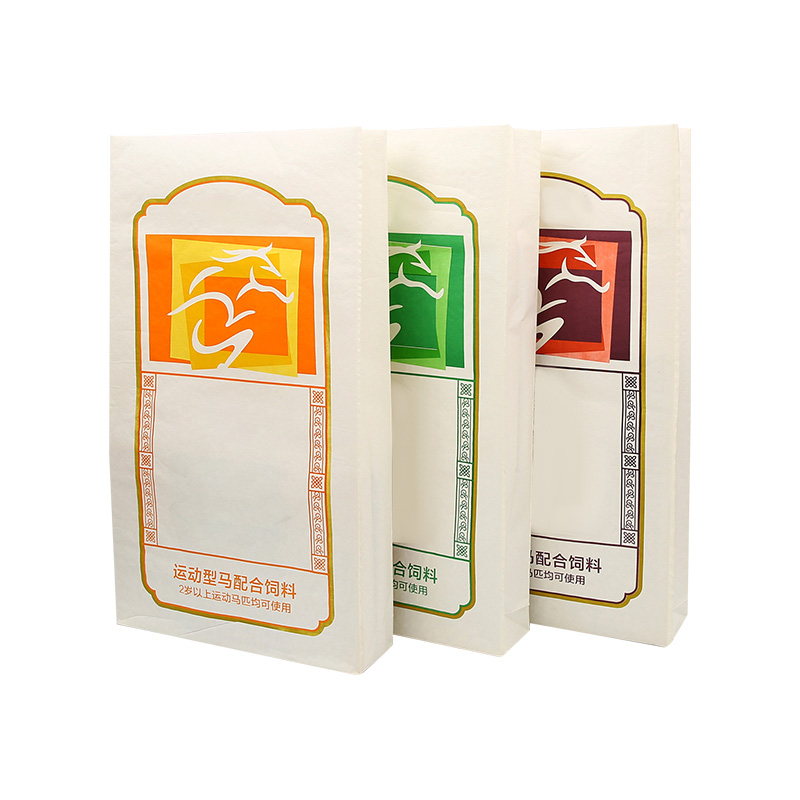The core principle of woven packaging bags is to form a three-dimensional mesh structure through the plastic processing of polymer materials and warp and weft weaving technology and finally make a packaging container with load-bearing and protective functions.

I. Raw material physical properties basis
Polypropylene (PP) or polyethylene (PE) is selected as the main material. Its molecular chain forms a highly oriented structure after heating and stretching, giving the flat wire high tensile strength (≥50MPa) and wear resistance.
The molecular weight distribution is controlled between 2.5-4.5 to ensure good fluidity during melt extrusion.
II. Flat wire preparation process
Melt extrusion
The resin is heated to 185-230℃ through a twin-screw extruder and formed into a continuous film through a T-die.
Stretching orientation
A hot roller group (temperature 110-130℃) is used for 3-9 times longitudinal stretching to promote the directional arrangement of molecular chains and enhance strength23. Fiber shaping
The diaphragm is cut into 1-3mm wide flat wires and then cooled and shaped to obtain a weaving material with a line density of 4-12tex.
III. Weaving Process and Structural Formation
Once the flat wires are prepared, they undergo a warp and weft weaving process to form a durable mesh structure. This three-dimensional lattice enables woven packaging bags to achieve high load-bearing capacity while maintaining flexibility. The weaving density and pattern are carefully controlled to ensure consistent strength and uniformity across the bag surface. Both plain weave and twill weave patterns are commonly applied, depending on the intended application. The resulting structure provides mechanical stability for heavy or granular products, such as grains, chemicals, and construction materials.
IV. Laminating for Enhanced Functionality
To improve barrier properties and environmental resistance, many woven packaging bags are laminated with kraft paper or polyethylene films. A kraft paper laminated PP woven bag combines the mechanical strength of the woven polypropylene base with the moisture and puncture resistance of paper. Similarly, laminated woven polypropylene bags enhance durability, protect contents from contamination, and facilitate printing for branding or product information. Lamination also allows for better sealing and handling, making these bags suitable for long-distance transport and industrial storage.
V. Customization and Sustainable Solutions
Modern supply chains increasingly require sustainable custom packaging options that align with environmental goals while meeting practical performance standards. Woven packaging bags can be tailored in size, weight capacity, and lamination type to suit various industry requirements. Sustainable custom packaging often incorporates recycled materials or biodegradable coatings, helping reduce environmental impact. For example, a laminated woven polypropylene bag can be designed to optimize material usage without compromising structural integrity. By selecting appropriate raw materials and lamination layers, manufacturers can provide packaging that balances sustainability, strength, and functionality.
VI. Performance Testing and Quality Assurance
Ensuring the reliability of woven packaging bags involves a series of performance tests. Tensile strength, tear resistance, and seam integrity are measured to guarantee the bag can withstand handling, stacking, and transportation stress. Additionally, barrier properties, including moisture and UV resistance, are evaluated, particularly for laminated woven polypropylene bags intended for long-term storage. Sustainable custom packaging solutions also undergo lifecycle assessments to verify environmental benefits while maintaining usability in industrial and commercial applications.
VII. Applications Across Industries
The versatility of woven packaging bags allows their use in diverse sectors. In agriculture, PP woven bags and kraft paper laminated PP woven bags provide safe and breathable storage for grains, seeds, and fertilizers. In chemical and construction industries, laminated woven polypropylene bags protect powders, granules, and cement from moisture and mechanical damage. Food industries also benefit from these packaging solutions, where laminated bags combine hygienic protection with printable surfaces for labeling and branding. The adaptability of woven packaging bags ensures they remain relevant in industries where durability, cost-efficiency, and sustainability are equally important.
VIII. Future Trends in Woven Packaging Bags
Continued innovation in polymer processing, lamination techniques, and weaving technology is expected to expand the functionality of woven packaging bags. Sustainable custom packaging initiatives will likely drive the development of recyclable and biodegradable laminated woven polypropylene bags, reducing reliance on single-use plastics. Enhanced production methods and quality control systems will further increase consistency, safety, and efficiency, allowing industries to meet growing demands while less environmental impact. By combining structural strength, barrier performance, and tailored customization, woven packaging bags will continue to play a vital role in modern industrial and consumer packaging solutions.


 English
English Español
Español عربى
عربى
